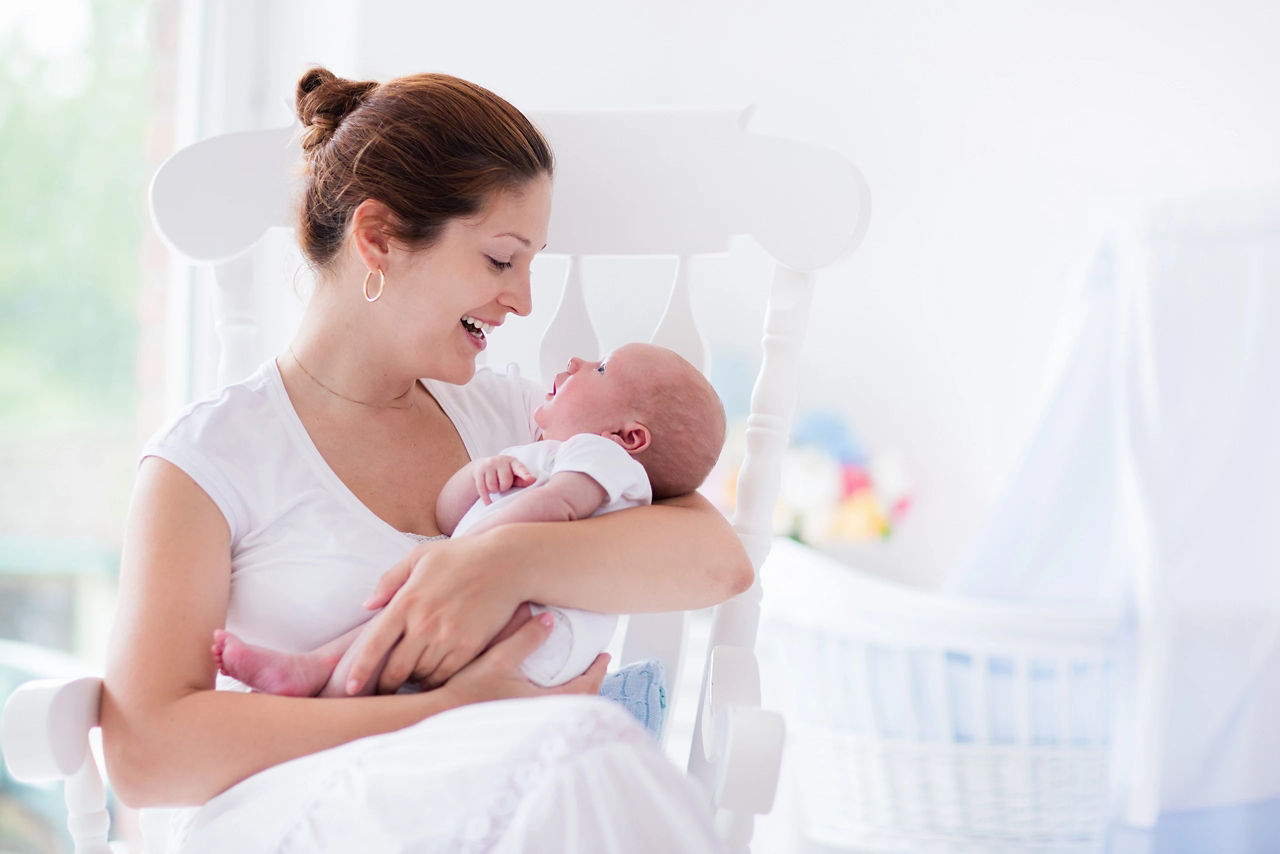Free weaning plan - Register here
What are my partner’s birthing options?
When it comes to giving birth, there are plenty of options available for your partner. The right choice is the one that she feels most comfortable with and her midwife believes is best for her and the baby.
- Hospital birth – the most popular choice in Britain, the main benefit being that your partner will be in a place packed with expertise and facilities. You’ll have doctors and midwives on hand as well as specialist care, should your partner need it. And she’ll be surrounded by other new mums in the same situation which can be a great comfort.
- Home birth – many mums prefer giving birth at home as it is a relaxed and familiar environment. You’ll need to make sure your partner’s midwife is happy with this option before deciding on it, as there are fewer pain relief options and if she needs emergency care she’ll need to be transferred to hospital.
- Birth centres – available in some health authority areas, these are more homely than hospitals but with less medical intervention. They offer facilities such as family accommodation, water pools and complementary therapies, which may not be available at your local hospital.
- Water birth – seen as less stressful for your baby as they’ll be born into an environment quite like the one they’re used to in the womb. Water births are possible at any of the above locations; your hospital may offer some sort of water birth option, they’re very popular at birth centres and you can even hire a birth pool for giving birth at home.
As long as your partner’s pregnancy is running smoothly and she is fit and healthy, she’s free to choose the birthing option she feels most comfortable with. And it’s not set in stone – there is room for her to change her mind later. Just make sure you completely understand what she wants and doesn’t want, as you may be asked about her wishes during labour or the birth, if your partner is otherwise too preoccupied!
What are the signs of labour?
Your partner will know she’s in labour if she starts to experience contractions – they won’t be too intense at first but will get more frequent and more painful. She might describe it as a pain in her lower back that seems to spread round to the bottom of her bump.
Her waters may break (which can be a rush of liquid or a trickle) but every labour is different and her waters breaking doesn’t necessarily mean that your baby’s birth is imminent. Sometimes this might not happen until later on in labour.
If your partner thinks she’s in labour then she should call her midwife. It’s a good idea for you to have the midwife’s and other important numbers too, in case you have to make the call.
Unless you have a home birth planned, the midwife will tell her when to go into hospital. Even if you’re not 100% sure whether your partner is in labour or not, it’s worth getting it checked out – just be prepared to be sent home again!
Preparing for a hospital birth
If your partner is planning a hospital birth, there are some really useful things you can do which will help save you time and stress on the big day:
- Practise driving to the hospital using different routes, in case your favourite route is jammed.
- Time the journeys, so you know how long it’ll take to get there.
- Check you know where to park; if you’re using a pay car park, find out how much it costs and keep enough spare change in the glove compartment, so you’re not rooting around at the last minute.
What your partner will need to take to the hospital
Your partner will probably have had her hospital bag packed weeks before this but the last thing on her mind at this point will be remembering things to take, so it’s worth you checking that she has her bag with her, together with her birth plan if she’s written one, and her maternity notes.
What you should take to the hospital
With so much attention on packing your partner's bag, it's easy to forget you may need a few things too. So once you've checked her bag is ready to go, pack a separate one for yourself. Here are a few ideas of what to take:
- A change of clothes in case of a lengthy labour
- Swimming trunks if your partner’s planning a water birth
- Toothbrush, toothpaste and deodorant
- Some water and snacks
- Extra change for the car park or phone
- Any prescription medicine you take regularly
- Painkillers – you may need some too!
- Camera/video with a fully charged (and a spare) battery
- Fully charged mobile phone, with a list of key numbers
- A watch to time contractions
- Something to fill in time like an mp3 player or book or magazine
What happens when you arrive at the hospital
When you first get to hospital for the birth your partner will probably be taken to a room for mums-to-be who’ve just arrived. A midwife will run through a series of checks and tests with her. It may be her own midwife who does this but it’s more likely to be the midwife who’s on duty at the time.
What happens next
If your partner is in early labour it may be better to take her home again and wait for the contractions to get stronger. If you stay, she’ll be given a bed on the early labour ward and will move into a delivery room when her labour progresses.
If her contractions aren’t too strong this is when the midwife will go through her birth plan with her and find out what all her preferences are during labour. It’s important that you’re familiar with her birth plan too.
However, if she’s in full labour she'll be taken straight to a delivery room. She’ll still be able to tell the midwife about her birth plan but if things are moving more quickly by this stage, you (or her birth partner if you are not planning to be in the delivery room) will need to step in. So make sure you know things like her preferred pain relief, what position she wants to give birth in, and whether she’d like skin-to-skin contact with your new baby afterwards.
What if she needs a caesarean?
When doctors feel that a normal delivery will put your partner or your baby at too great a risk they will advise her to have a caesarean section. Some women find out they need a caesarean section long before they give birth, but for others the decision might not be made until they go into labour. It’s most likely that she won’t need one, but if she does, don’t worry. It really is a very straightforward procedure that’s over within an hour and all your partner should feel is a little pressure, nothing more.
It takes around 6 weeks to recover from a caesarean section, so your partner will need extra help at home so she can rest and concentrate on her own recovery as well as your beautiful new baby.

Join the C&G baby club today
- Weekly emails with tips and advice for your stage
- 1-to-1 support from our dedicated Careline team, 8.30am - 5.30pm Monday to Friday.

Join the C&G baby club today
- Weekly emails with tips and advice for your stage
- 1-to-1 support from our dedicated Careline team, 8.30am - 5.30pm Monday to Friday.
More from pregnancy
Pregnancy topics
Any more questions?
Our specialist baby advisors and experienced mums are here to talk and ready to help whenever you need them. You can call us or reach us on Live Chat 8.30am-5.30pm Monday-Friday.
Phone
Call 1800 570 570
FAQs
For all the latest information
Email Us
Send us an email
8.30 am - 5.30pm Monday-Friday




